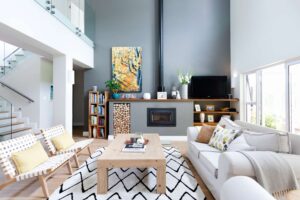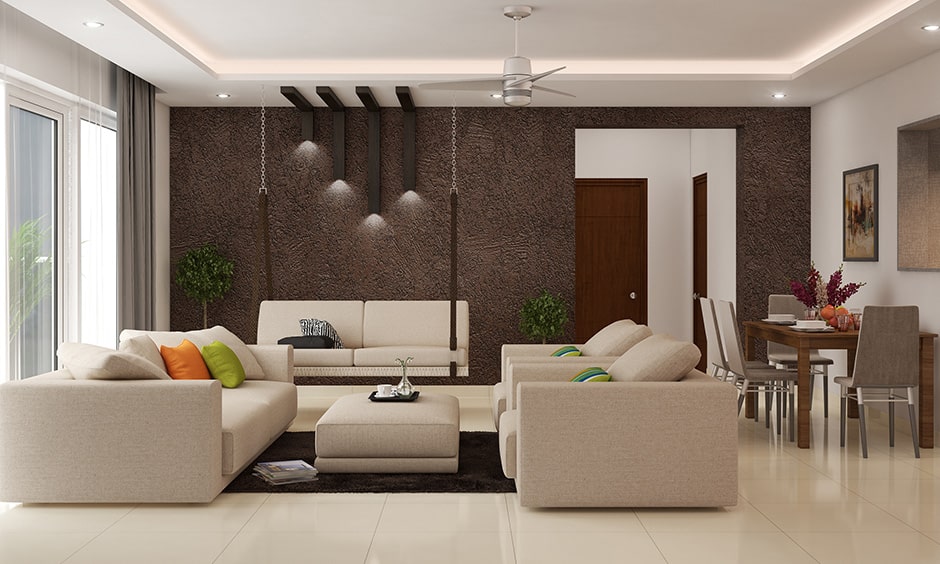Before we dive in, let’s cover two golden rules that apply to any layout:
- Create a Focal Point: Every room needs an anchor. This could be a fireplace, a large window with a view, a media console, or even a stunning piece of art. Arrange your furniture to face it.
- Prioritize Traffic Flow: Leave clear, walkable pathways (about 2-3 feet wide) so people can move through the room without tripping over an ottoman or squeezing between the couch and chair.
Now, let’s solve your layout puzzle. Here are 5 versatile living room arrangements for any shape and size.
The Classic Conversation Pit
![]()
Best for: square rooms, large open spaces, or homes where chatting is the main event.
The Vibe: Intimate, social, and cozy.
This timeless arrangement is all about connection. The goal is to create a cozy cluster where people can easily talk without straining their necks or raising their voices.
The Functional Focal Point
![]()
Best for: Rooms with a built-in anchor like a fireplace, a large window, or a media unit.
The Vibe: Balanced, traditional, and purposeful.
This is the most common and intuitive layout. It directs all attention to the room’s natural star, making the space feel organized and harmonious.

The Zone Defender (For Open Floor Plans)
![]()
Best for: Large, open-concept lofts and great rooms.
The Vibe: Intentional, multi-functional, and modern.
An open floor plan can feel like a vast, intimidating sea of possibilities. The key is to use furniture to create distinct “zones” for different activities without building walls.
The Narrow Room Navigator
![]()
Best for: Long, rectangular, or shotgun-style rooms.
The Vibe: Elongating, efficient, and smart.
A narrow living room presents a unique challenge: you need to provide seating without turning the space into an obstacle course. The goal is to arrange furniture to widen the room visually.
The Small Space Savant
![]()
Best for: Apartments, studios, and cozy dens.
The Vibe: Airy, efficient, and clever.
When every square inch counts, your furniture choices and arrangement need to be strategic. The goal is to maximize function without sacrificing the sense of space.

